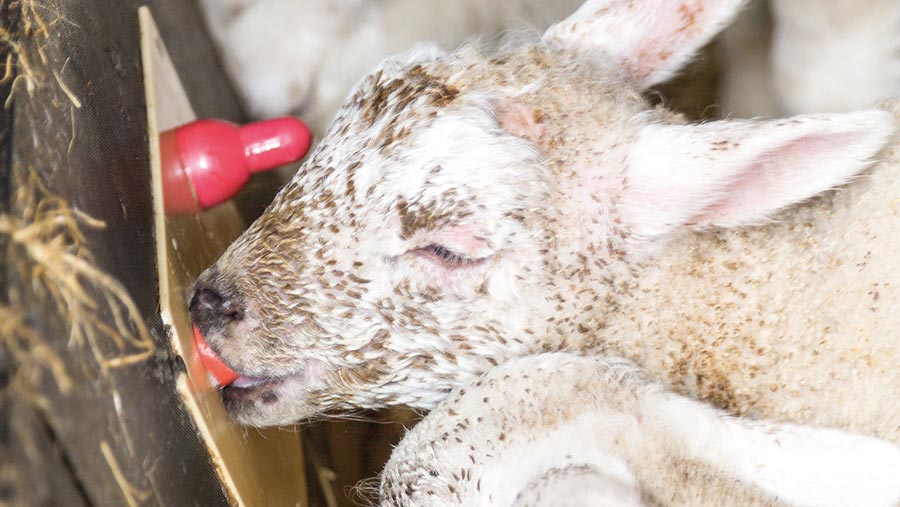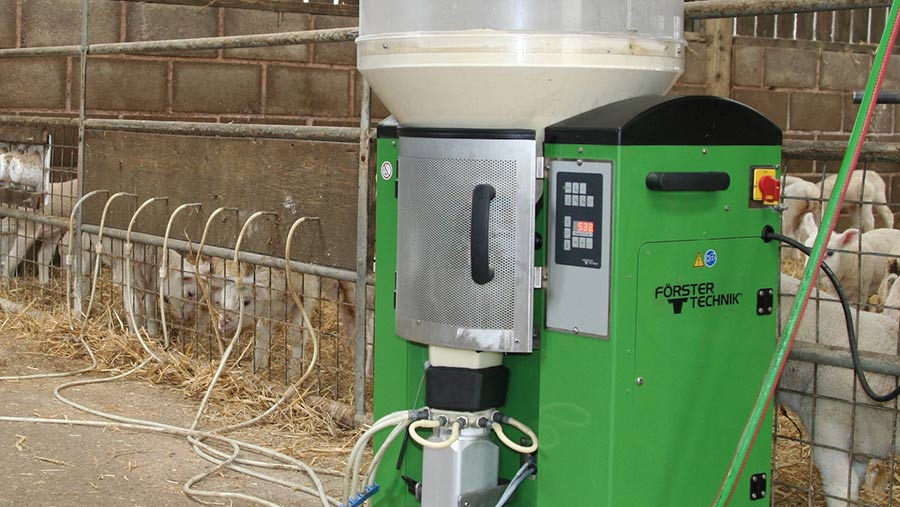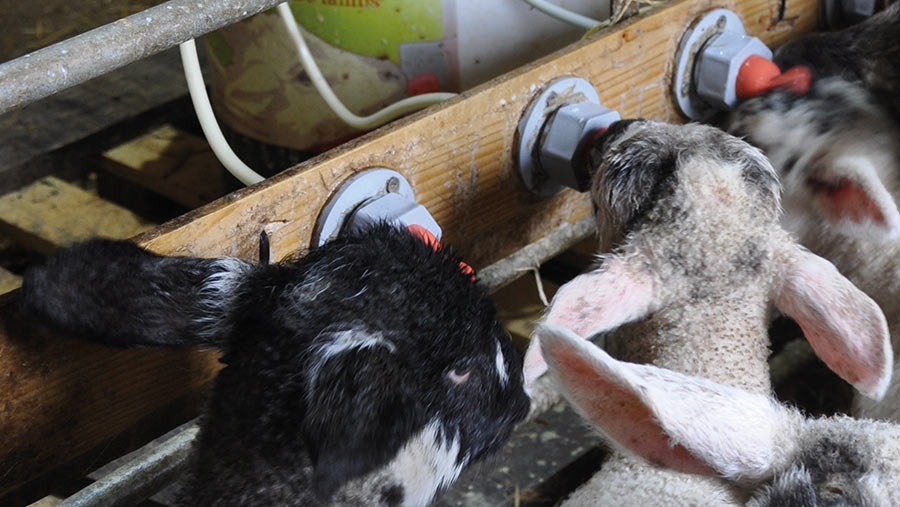How milk replacer improves margins for surplus lambs
 © Volac
© Volac Research trials have shown rearing surplus lambs on milk replacer could clear a margin of £40 a head in a strong market.
Two simultaneous trials were carried out last spring to monitor lamb weight gains and assess the cost-effectiveness and efficacy of the practice.
At Harper Adams University (HAU), 13 surplus Suffolk Mule ewe cross Texel lambs were fed Lamlac via a thermostatically controlled Volac Ewe2 milk bucket, and weighed weekly.
On a commercial farm in Lancashire, 100 surplus lambs out of Aberfield/Mule cross ewes were fed milk via a computer-controlled Eco Feeder – 51 of these lambs were weighed at birth, two weeks of age and again at weaning.
See also: Eight key steps to successful surplus lamb management

Eco Feeder © Volac
Milk feeding temperatures
At HAU, milk was initially provided warm (25-37C) until lambs had learnt to suckle. The temperature was then reduced (to prevent overconsumption) to 20C for one week and then to 15C until weaning.
On the commercial unit, the temperature was reduced to 20-22C through to weaning.
Fresh water, creep feed and clean straw were provided ad-lib.

© Volac
Results
Lambs at HAU and the Lancashire farm gained a respective average of 0.38kg and 0.31kg/day from birth until weaning at 35 days of age.
Trial co-ordinator and Volac research scientist Jessica Cooke said: “The maximum weight recorded was 23kg, which just shows the potential these lambs have got.”
Removing the third lamb helps protect ewe condition and improve weights of lambs left on the ewes, said Dr Cooke.
“These latest trials clearly show the value of rearing as many surplus lambs as possible on any sheep unit, and we urge flocks to prepare their systems accordingly for the 2021 lambing season.”
Dr Cooke stressed farmers should work out their own margins based on individual costings and predicted returns for the year ahead.
Surplus lamb weights from birth to weaning |
||
|
|
Mean lamb body weight (kg): |
Mean lamb body weight (kg): Lancashire commercial unit |
|
Birth |
4.37 |
4.23 |
|
Week 1 |
6.25 |
|
|
Week 2 |
8.68 |
8.75 |
|
Week 3 |
11.85 |
|
|
Week 4 |
15.32 |
|
|
Week 5 |
17.78 |
14.96 |
Estimated costings |
|
|
|
Cost (£) a surplus lamb reared* |
|
Lamlac milk powder (12kg consumed a head) |
£24.60 |
|
75kg of creep fed to slaughter |
£22.50 |
|
Vaccination and straw |
£2 |
|
Volac Ewe2 feeder (thermostatically controlled warm milk bucket) |
£1.80 |
|
Computerised Eco Feeder |
£1.23 |
|
Mid-range cost of feeders |
£1.52 |
|
Estimated total cost |
£50.62 |
|
Income for 40kg lamb (at six months) |
£90* (£2.25/kg) |
|
Margin |
£39.38 |
*Conservative estimates; lamb sale average based on 2020 prices. Lambs were fed ad-lib. Bottle feeding would cost less, but labour would increase significantly. Costings do not include labour, housing, water or electricity. Feeders will last longer if they are well maintained.
